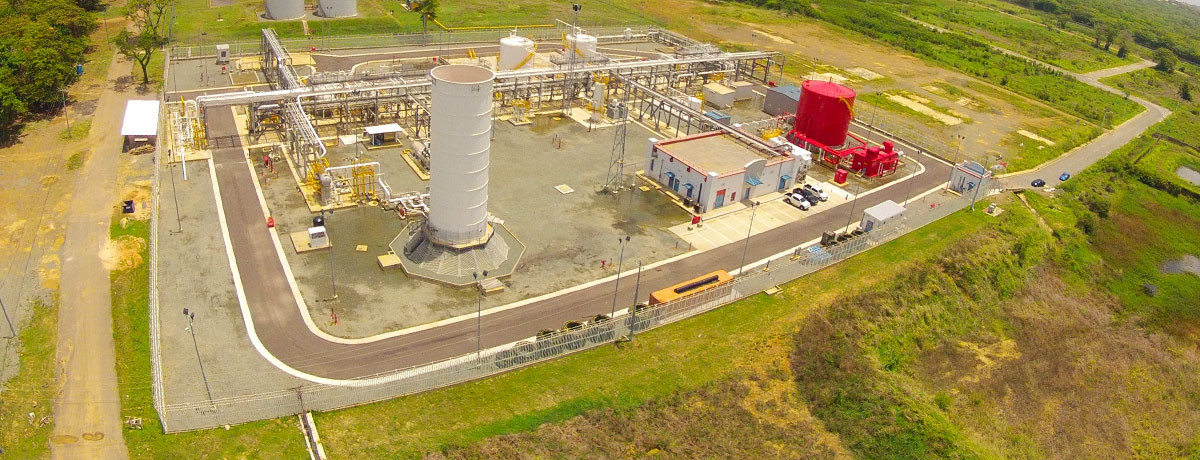
Tobago Natural Gas Receiving Facility
Celebrating the first Natural Gas onshore Gas Receiving Facility in Tobago.
More Under "Installations"
NGC’s Beachfield Operations
NGC’s Operations at the Beachfield Installation.
Visit Page »
Currently Reading "Tobago Natural Gas Receiving Facility"
The onshore Gas Receiving Facility is located at Cove Eco Estate and Business Parkland, adjacent to the T&TEC Power Plant.
It was designed to operate with two independent processing trains each with a capacity of 100 million cubic feet of gas per day (mmcfd) and a metering system for measuring the gas volumes sold. At present only one processing train has been installed and therefore the facility’s current processing capacity is 100mmcfd. It has a minimum capacity of 12mmcfd and a maximum of 200mmcfd with the second processing train installed.
This Gas Receiving Facility boasts of a ground flare, the first of its kind in the country. Therefore, no visible or open flame and no smoke emanating from the flare is seen. This feature is consistent with Tobago’s theme of ‘Clean, Green, Safe and Serene’.
All storm water will be first collected in the storm drain sump for removal of any hydrocarbons. Water produced during the processing operations will be collected separately and treated in the Produced Water Treatment unit to ensure it complies with the EMA water effluent standards before release into the environment.
For safety purposes, the following are attached to the facility:
- Automated Process Control System
- Automatic Emergency Shutdown System
- Standby Generator to handle 100% of the Plant load
- Automatic fire and gas detection systems
- Firewater and foam systems
- PA/Emergency alarm system
- An odouriser to inject an odourant into the gas before it is sold to customers on the Industrial Estate. The odourant‘s pungent smell will allow for easy and quick detection of any gas leaks.
Any condensate (hydrocarbon liquids) removed from the gas stream is stabilised, collected and stored in two storage tanks (2,800 barrels each) with bund walls or barriers around the tanks as a secondary barrier to prevent leakage of the contents into the environment.
During operations the facility will be manned by a team of cross functional technicians working on a 12-hour continuous shift basis.